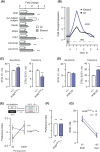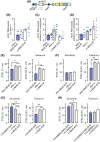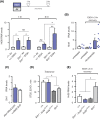Mef2 induction of the immediate early gene Hr38/Nr4a is terminated by Sirt1 to promote ethanol tolerance
- PMID: 29726098
- PMCID: PMC6215524
- DOI: 10.1111/gbb.12486
Mef2 induction of the immediate early gene Hr38/Nr4a is terminated by Sirt1 to promote ethanol tolerance
Abstract
Drug naïve animals given a single dose of ethanol show changed responses to subsequent doses, including the development of ethanol tolerance and ethanol preference. These simple forms of behavioral plasticity are due in part to changes in gene expression and neuronal properties. Surprisingly little is known about how ethanol initiates changes in gene expression or what the changes do. Here we demonstrate a role in ethanol plasticity for Hr38, the sole Drosophila homolog of the mammalian Nr4a1/2/3 class of immediate early response transcription factors. Acute ethanol exposure induces transient expression of Hr38 and other immediate early neuronal activity genes. Ethanol activates the Mef2 transcriptional activator to induce Hr38, and the Sirt1 histone/protein deacetylase is required to terminate Hr38 induction. Loss of Hr38 decreases ethanol tolerance and causes precocious but short-lasting ethanol preference. Similarly, reduced Mef2 activity in all neurons or specifically in the mushroom body α/β neurons decreases ethanol tolerance; Sirt1 promotes ethanol tolerance in these same neurons. Genetically decreasing Hr38 expression levels in Sirt1 null mutants restores ethanol tolerance, demonstrating that both induction and termination of Hr38 expression are important for behavioral plasticity to proceed. These data demonstrate that Hr38 functions as an immediate early transcription factor that promotes ethanol behavioral plasticity.
Keywords: Drosophila; Hr38; Mef2; Sirt1; behavioral plasticity; ethanol tolerance; immediate early gene; mushroom bodies.
© 2018 The Authors. Genes, Brain and Behavior published by International Behavioural and Neural Genetics Society and John Wiley & Sons Ltd.
Conflict of interest statement
The authors state no conflict of interest.
Figures




References
-
- Fadda F, Rossetti ZL. Chronic ethanol consumption: from neuroadaptation to neurodegeneration. Prog Neurobiol. 1998;56:385‐431. - PubMed
Publication types
MeSH terms
Substances
Grants and funding
LinkOut - more resources
Full Text Sources
Other Literature Sources
Medical
Molecular Biology Databases

